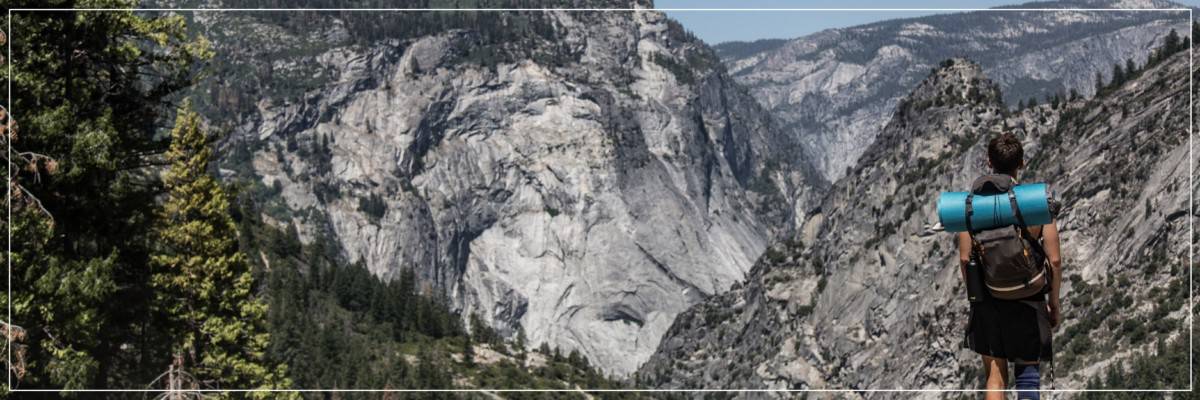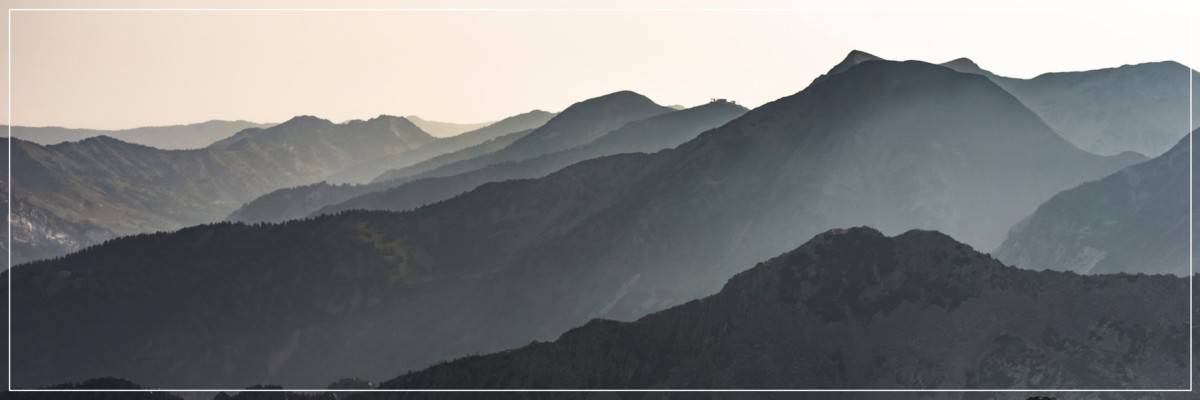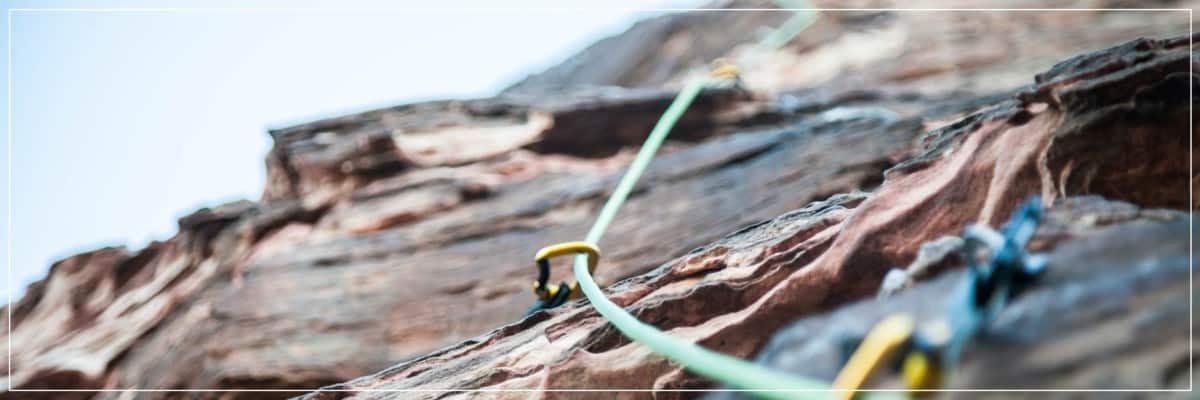
The lines are often blurry when people talk about mountain climbing. Sometimes, mountain climbing terms are used interchangeably. And it can be quite confusing when you are starting out.
So what is non technical climbing? Non technical climbing is ascending a mountain without the use of any specialized climbing equipment. Such equipment includes body harness, rope, crampons, ice tools etc. In the broadest sense, it includes activities such as hiking, trekking, and scrambling.
But not all hiking, trekking and scrambling activities are non technical climbs. This can make it even more confusing for a beginner.
Different Forms Of Non Technical Climbing
Non-technical climbing can take the form of a hike, a trek or a scramble. And as mentioned above, not all hiking, trekking and scrambling activities are non technical climbs
Here’s a quick overview of the differences between hiking, trekking and scrambling:
| Hiking/ Trekking | Scrambling |
| Taking long, vigorous walks.May be on flat or inclined terrains. | Ascending steep terrains with the use of your hands and feet. |
| Often following a defined trail. | Unlikely to be on any defined trail. |
And this is how they relate to non-technical climbing:
| Hiking/ Trekking | Scrambling |
| – When you are hiking or trekking in the mountains, with the objection of reaching the summit, it is considered a non-technical climb. | – Depending on the difficulty level, scrambling can be technical or non technical. – A technical scramble is similar to a rock climb. |
What Is Technical Climbing?
Technical climbing is ascending a mountain with the use of specialized climbing equipment. The equipment can either be for climbing (such as ice tools) or protection purposes (such as ropes or belay).
Rock climbing and ice climbing are some examples of technical climbing.
What About The Use Of Crampons And Ice Axe?
Crampons are sharp spikes attached to your footwear. They are used for walking on icy terrains.
Ice axe is a piece of climbing equipment used on icy terrains. They are used to cut steps into the ice and grab rock edges when hiking or trekking.
These equipment are relatively easy to use. Their main purposes are to facilitate hiking or trekking over ice and hard snow. Even if the climb requires the use of crampons and ice axe, they are still regarded as non technical climbs.
On a side note, an ice tool is not the same things as an ice axe. An ice tool is a specialized form of ice axe that’s used for vertical ice climbing. If a climb requires the use of ice tools, it is certainly a technical climb.
Why Does This Matter? The Importance Of Non Technical Climbing
You might be wondering. Why is there a need to differentiate between non technical or technical climbing?
Personally, I find it one of the easiest way to determine if a climb is suitable for you.
There are many ratings and classification systems for mountains climbing around the world. The standards and terms might vary between different countries and different associations. And not everyone is familiar with the classification, certainly not among beginners.
But when we say that a mountain is non technical, it is a common understanding for everyone (hopefully). For a beginner, you will know what you are getting into for a non technical climb.
Non technical climbs are also an integral part of everyone’s climbing journey.
Non technical climbing is everyone’s starting point. Non technical climbing is the starting place for all aspiring mountaineers. Non technical climbs are the best places for:
- Getting a better feel for the sport
- Training and body conditioning
- Acclimatizing to high altitudes
- Introducing the sport to children
Non technical climbing is a less risky activity. Non technical climbing still has its risks. But the likelihood of accidents are lower on nontechnical climbs. The severity of injuries are also lower.
Non technical climbing is not as costly. Technical climbs require quite a number of specialized tools and equipment. for a non technical climb, all you need are your arms and legs.
Climbing equipment can often be quite costly. You may also need to replace them regularly due to wear and tear.
To prepare for a technical climb, you would also most likely need to sign up for courses. Courses allow you to get the relevant skills and expertise. These courses vary from hundreds of dollars to thousands of dollars.
In addition, you would need to go for more frequent climbs to practice these techniques. Whether you practice at indoor climbing gyms or outdoors, you will need to spend more money.
Non technical climbing can be taken up by most people. For the reasons mentioned above, it is relatively easy to get into non technical climbing.
You can summit many well-known mountain peaks without any technical climbing skills. Mount Kilimanjaro, one of the Seven Summits in the world, is one such mountain.
| Thinking about climbing Kilimanjaro? Check these out: – How To Find The Best Kilimanjaro Tour Operator: 60-Point Checklist – Which Kilimanjaro Route Has The Highest Success Rate? |
Is Non Technical Climbing Enough For You?
Non technical climbing and technical climbing are two rather distinct forms of activities.
Many mountain climbers probably never ever enter into the world of technical climbing. And for climbers who enjoy technical climbs, non technical peaks are unlikely to be enough for them.
You will first need to know your purpose and objective for taking up mountain climbing. This will help you decided if non technical climbing is going to be enough for you.
Some questions that you can ask yourself:
- Am I taking up mountain climbing because I want to conquer the Seven Summits?
- Am I taking up mountain climbing because I want to challenge myself to survive in extreme conditions?
- Am I taking up mountain climbing because I want to climb up frozen waterfalls and glaciers?
- Am I taking up mountain climbing because I love adrenaline rushes?
- Am I taking up mountain climbing as a fun and healthy way to spend time with my family or friends?
- Am I taking up mountain climbing to motivate myself to get in shape?
If you see mountain climbing as a leisure activity or as exercise, then non technical climbing is right for you. There are countless mountains where you can reach the summit simply by hiking or trekking to the top.
But if you want to conquer all the tallest peaks around the world or are simply an adrenaline junkie, then non technical climbing is not going to be enough for you.
And I think it’s important to know one thing. You don’t feel like you have to take up technical climbing to be seen as a “more serious” climber. You can enjoy mountain climbing at different levels. It does not matter if a climb is technical or not.
List Of Non Technical Mountains For Multi-Day Climbs

There are plenty of mountains that you can conquer within a day. Generally, you can climb mountains below 8,000 feet (2,500 meters) within a day (8 to 12 hours).
Higher mountains are a good chance to experience spending a few days on a climb. Below is a list of some higher non technical mountains which are suitable for beginners.
The duration could vary depending on the routes you take. You may also need some time to acclimatize to the higher altitudes. If you are climbing with a guide, they will have some recommended itineraries.
Some of the climbs require the use of crampons and ice axe. I’ve made a note in their descriptions below. These are good peaks to climb if you would like to (tiny) taste of alpine climbing or ice climbing.
North America
1. Mount St. Helens
Location: USA, North America
Elevation: 8,363 ft (2,549 m)
Known for: an active volcano with a major eruption in 1980
2. Mount McLoughlin
Location: USA, North America
Elevation: 9,495 ft (2,894m)
3. South Sister
Location: USA, North America
Elevation: 10,358 ft (3,157 m)
Known for: the third highest mountain in Oregon; highest peak of Three Sisters
4. Mount Temple
Location: Canada, North America
Elevation: 11,627ft, (3,544m)
5. Mauna Kea
Location: USA, North America
Elevation: 13,802ft (4,207m)
Known for: “highest” mountain in the world (measured height from base to top)
6. Longs Peak
Location: USA, North America
Elevation: 14,259 ft (4346m)
Known for: the only fourteener in Rocky Mountain National Park
7. Mount Whitney
Location: USA, North America
Elevation: 14,505ft (4,421m)
Known for: highest peak in California and USA and the contiguous United States
| Check out the 27 Highest Mountains To Climb in North America for Beginners and the 56 Highest Mountains To Climb in the US for Beginners. |
Asia
8. Mount Fuji
Location: Japan, Asia
Elevation: 12,388ft (3,776 m)
Known for: highest peak in Japan; most climbed mountain in the world
9. Mount Kinabalu
Location: Malaysia, Asia
Elevation: 13,435ft, (4,095m)
Known for: highest peak in Malaysia; tallest peak in the Malay Archipelago
10. Mount Stok Kangri
Location: India, Asia
Elevation: 20,182ft (6,153m)
Known for: highest peak in the Stok Range of the Himalayas
11. Mera Peak
Location: Nepal, Asia
.
Elevation: 21,246ft (6,476m)
Note: requires ice axe and crampons
| Check out the 74 Highest Mountains To Climb in Asia for Beginners. |
Africa
12. Mount Toubkal
Location: Morocco, Africa
Elevation: 13,671ft (4,167m)
Known for: highest peak in North Africa
13. Mount Kenya
Location: Kenya, Africa
Elevation: 17,057ft (5,199m)
Known for: second highest peak in Africa after Kilimanjaro
14. Mount Kilimanjaro
Location: Tanzania, Africa
Elevation: 19,341ft (5,895m)
Known for: highest peak in Africa, one of the Seven Summits
| Check out the 18 Highest Mountains To Climb in Africa for Beginners. |
Europe
15. Breithorn
Location: Switzerland, Europe
Elevation: 13,661ft (4,164m)
Known for: easiest of the Alpine Four-Thousanders
Note: requires ice axe and crampons
16. Mont Blanc
Location: border of France and Italy, Europe
Elevation: 15,771ft (4,807m)
Known for: highest peak in France and Italy
Note: requires ice axe and crampons
17. Mount Elbrus
Location: Russia, Europe
Elevation: 18,510ft (5,642m)
Known for: highest peak in Europe, one of the Seven Summits
| Check out the 56 Highest Mountains To Climb in Europe for Beginners. |
South America
18. Mount Chimborazo
Location: Ecuador, South America
Elevation: 20,564ft (6,268m)
Known for: highest peak in Ecuador; the highest peak above Earth’s center
19. Mount Ojos Del Salado
Location: border of Argentina and Chile, South America
Elevation: 22,615ft (6,893m)
Known for: highest active volcano in the world, one of the Volcanic Seven Summits
Note: requires ice axe and crampons
20. Mount Aconcagua
Location: Argentina, South America
Elevation: 22,838ft (6,961m)
Known for: highest peak in Western and Southern Hemispheres, one of the Seven Summits
Note: requires ice axe and crampons
| Check out the 20 Highest Mountains To Climb in South America for Beginners. |
When To Progress Beyond Non Technical Climbing?

As mentioned above, technical climbing requires a greater investment of time and money.
So before you get started, it is useful to ask yourself these questions:
How many non techincal mountains have you climb? Did you climb mountains with different terrains or difficulties (e.g. rocky mountains, volcanic mountains and icy mountains)?
The more experience you have, the better you will know if the sport is really for you. You will also know what you enjoy or don’t enjoy doing.
What is the tallest mountain you have climbed? Did you get altitude sickness?
For some people, altitude sickness might be overcome with acclimatization and training. For others, it might not. And in extreme conditions, altitude sickness might be unavoidable for everyone.
Read: How High Can You Climb Before You Need Oxygen?
What is the longest climb you have been on? How did you feel at the end of the climb?
A technical climb is going to be more physically and mentally draining than a non technical one. Are you ready for that?
What is the harshest condition you have encountered? Are you physically and mentally prepared for it?
Technical climbs will challenge you physically and mentally in many new ways.
But you don’t have to overthink it. These are useful things to keep in mind but certainly not barriers to keep you away.
As long as you are comfortable spending the time and money required, there’s no harm in trying things out. Even if you end up finding out it’s not for you, it beats always wondering or regretting not giving it a go.
How To Progress Beyond Non-technical Climbing?
Read: How To Start Mountain Climbing Today: 10 Simple Steps
1. Decide on what kind of technical climbing you would like to do.
There are 3 common types of technical climbing:
Rock climbing: this refers to vertical climbing over rocky terrains. Rock climbing can also be done on artificial rock walls in the gym.
Ice climbing: this refers to vertical climbing on icy terrains such as glaciers and frozen waterfalls. Certain forms of ice climbing are also referred to as alpine climbing.
A natural progression would be to start off with rock climbing. It allows you to focus on the techniques of climbing on vertical surfaces. You will also learn protection techniques such as how to tie knots, how to belay etc.
These are the same skills required for ice climbing. For ice climbing, you will also need to learn how to use ice tools for climbing. There are also additional safety procedures specific to icy and snowy conditions. And of course, you will need to endure harsher and colder conditions.
2. Sign up for a course
Climbing gym
A safer and possibly cheaper option is to take up rock climbing courses at a climbing gym. You can focus on learning the basic techniques and training on vertical climbs.
But you will realize that climbing on the mountains is nothing like doing it on an artificial wall. There are no clearly marked routes or brightly colored handholds. Safety measures are also going to be very different from those in the gym.
Outdoor courses in the mountains
You will be able to pick up practical applications in the mountains much faster when climbing outdoors.
However, it is often costly and you might need to travel some distance to a suitable location.
Depending on your situation, you can either:
Option 1: start off at a climbing gym and later progress to an outdoor course in the mountains.
Option 2: sign up for a course in the mountains right away. Some courses might include spending some time at a climbing gym anyway.
3. Practice, practice, practice
If you don’t use it, you are going to lose it.
Unlike learning how to cycle, there are lots of things you can forget when it comes to technical climbing. You may forget your climbing techniques or forget how to use your equipment.
And no climbs are ever the same. The more you practice, the more experienced and confident you will be. This prepares you to deal with unforeseen situations in the mountains.
Related Questions
What is Class 1, Class 2 or Class 3 scramble? In the US, the Yosemite Decimal System rates climbing difficulties from Class 1 to Class 5. They define the classes as follows:
- Class 1: A walk or hike. A non-technical climb.
- Class 2: Simple scrambling, with the possibility of occasional use of the hands. Little potential danger is encountered.
- Class 3: Scrambling with increased risk of falling. Handholds are necessary. A rope should be available for learning climbers. Falls could be fatal.
- Classes 4 and 5: Technical climbs.
What is Grade 1, Grade 2, Grade 3 scramble? In the UK, they grade scrambles using Ashton’s system. Scrambles are Grade 1, 2, 3 based on their technical difficulties and exposure. The grades are defined as follows:
- Grade 1: Easy scramble with little or no hazards.
- Grade 2: Routes that contain longer difficult sections. A rope could be used for safety or confidence. Some rock climbing might be required.
- Grade 3: Ropes could be required for rock climbing where there are risks of serious falls.
